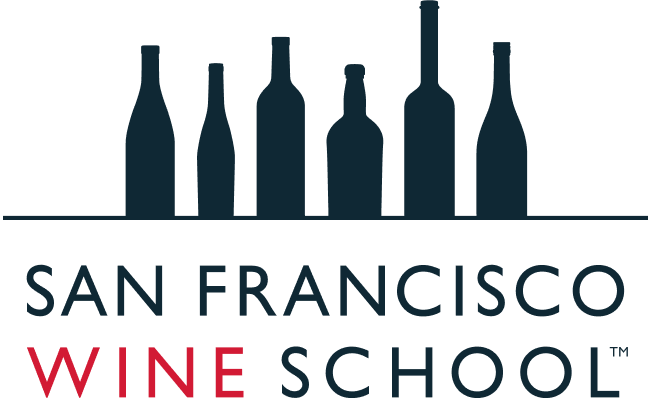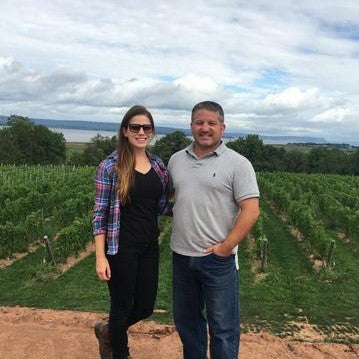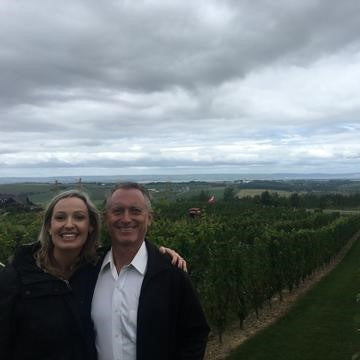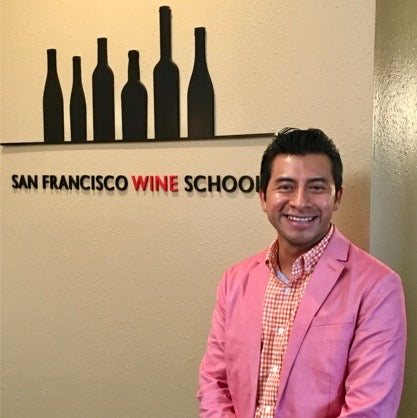Lightfoot & Wolfville Vineyards
Blomidon
 Jost Winery, Nova Scotia’s largest winery, purchased the formerly family farm with a slope ready for planting in 1996, with vines planted in 1997 as the valley had just begun to be recognized for quality wine grapes. Winemaker Gina Haverstock had grown up near Jost’s Malagash site, keeping in touch while working at Germany’s Breuer winery, returning home in 2006. “The intention was first to be a satellite vineyard for the Jost label, but when the first wines were tasted we decided it deserved to be its own entity with a separate staff and brand, providing more premium wines than the Jost label had,” she said.
Jost Winery, Nova Scotia’s largest winery, purchased the formerly family farm with a slope ready for planting in 1996, with vines planted in 1997 as the valley had just begun to be recognized for quality wine grapes. Winemaker Gina Haverstock had grown up near Jost’s Malagash site, keeping in touch while working at Germany’s Breuer winery, returning home in 2006. “The intention was first to be a satellite vineyard for the Jost label, but when the first wines were tasted we decided it deserved to be its own entity with a separate staff and brand, providing more premium wines than the Jost label had,” she said.“Canadian wine professionals are aware of us, but from the economic side they may only look at the ease of buying & selling an imported Pinot Grigio, and may not see local wines as relevant,” shared manager Craig Campbell. “But within the last five years the ‘Tidal Bay’ style has opened the door to people understanding Nova Scotia wine as it’s the common denominator for the 12 wineries—strength in numbers,” he smiled. “There’s also an educational element to it in that we’re using varieties unique in the wine world,” though this may change as their savory dry Rieslings showed a good aging capacity despite the vines relative youth.
Gaspereau Vineyards http://devoniancoast.ca/our-
 A chemical engineer who managed plants in the US and Toronto making electrical wiring, John McLarty found himself enjoying better wines when holiday traveling with his partner Lisa to Italy, Austria, and Germany. Taking early retirement in 2010 he discovered a Nova Scotia winery for sale in a fledgling industry offering him the opportunity “to get in on the ground floor.” That winery purchase didn’t work out, so they found a 7.5acre parcel with a 150yr. old house & barn just down the road from Fox Hill cheese factory and set about planting in 2011 what’s now 6.25acres of vines. “So far we haven’t been ‘weathered out’ in any vintage,” though July 2014’s Hurricane Arthur severely damaged some canes from their initial 1.1acre Riesling plantings which joined their six hybrids—L’Acadie, Frontenac Gris, NY Muscat, Marquette, Castel, Lucie Kuhlmann. In October 2015 he purchased a neighboring 10acre vineyard upon which he planted a half-acre of Viognier(!) to accompany Pinots Noir and Meunier, Chardonnay, Muscat Ottonel, Dornfelder.
A chemical engineer who managed plants in the US and Toronto making electrical wiring, John McLarty found himself enjoying better wines when holiday traveling with his partner Lisa to Italy, Austria, and Germany. Taking early retirement in 2010 he discovered a Nova Scotia winery for sale in a fledgling industry offering him the opportunity “to get in on the ground floor.” That winery purchase didn’t work out, so they found a 7.5acre parcel with a 150yr. old house & barn just down the road from Fox Hill cheese factory and set about planting in 2011 what’s now 6.25acres of vines. “So far we haven’t been ‘weathered out’ in any vintage,” though July 2014’s Hurricane Arthur severely damaged some canes from their initial 1.1acre Riesling plantings which joined their six hybrids—L’Acadie, Frontenac Gris, NY Muscat, Marquette, Castel, Lucie Kuhlmann. In October 2015 he purchased a neighboring 10acre vineyard upon which he planted a half-acre of Viognier(!) to accompany Pinots Noir and Meunier, Chardonnay, Muscat Ottonel, Dornfelder. McLarty’s intending to make “more international style wines by reducing acidity, ensuring riper grapes by netting earlier than do others in Nova Scotia,” while treating them gently by utilizing a state-of-the-art Scharffenberger crusher-destemmer, routinely deacidifying the hybrids and only doing so with vinifera when absolutely necessary with post-ML reds left in tank and barrel for up to 10mos. and applying temperature variations to drop their acids.
The Ontarian native sees the growth of vinifera as Nova Scotia’s natural progression because as a wine enthusiast he witnessed what Ontario had experienced in its transition. “Though we make good hybrid wines growers in warmer regions would be glad to, more vinifera will continue to be planted here.” He makes the wine himself using an Ontarian consultant. “Given the climate and varieties we started with, we learned to make good wines from aromatic hybrids. With climate change and better technology we’re able to compete with other vinifera quality regions yet remain unburdened by our history in having rapidly making quality innovations,” one of which is his claim being the only local winery using Riedel glassware in its tasting room.
Planters Ridge sources oak barrels used for reds from France. A modern, whistle-clean small winery that could be found in any number of quality-conscious nascent wine-producing area. Open only two years he’s exceeded his sales expectations by over 50%. His 2015 Rosé Baco/Frontenac Blanc blend (technically a ‘rotling’) is pleasantly savory and fruity with a long finish with his Riesling showing promise as the vines mature.
 This pioneering winery in Wolfville is a Swiss family operation with son Jürg making the wine, son-in-law Jason expertly chefing with his wife Beatrice managing matters, and daughter Cecilia running the retail shop. Owner Hanspeter Stutz, a former banker, bought Atlantic Canada’s first winery in 1993 when “you couldn’t drink Nova Scotia wines! Now we’re eight wineries in Wolfville alone—visitors love this cluster” learning of a winery for sale when conducting a project for a client when an acre of farmland went for $250-350; now it’s increased 15-20 times.
This pioneering winery in Wolfville is a Swiss family operation with son Jürg making the wine, son-in-law Jason expertly chefing with his wife Beatrice managing matters, and daughter Cecilia running the retail shop. Owner Hanspeter Stutz, a former banker, bought Atlantic Canada’s first winery in 1993 when “you couldn’t drink Nova Scotia wines! Now we’re eight wineries in Wolfville alone—visitors love this cluster” learning of a winery for sale when conducting a project for a client when an acre of farmland went for $250-350; now it’s increased 15-20 times.Farming 46 acres with 12 varieties over two sites, “our terroir for white wine is amazing,” said Stutz crowing about his Riesling and his Vidal ice wine though he thinks the excessive heat units now being enjoyed by traditional cool climate regions are creating problems for the future of Riesling. “We’re not an Old World area for which everyone knows everything,” he emphasized.
Domaine de Grand Pré http://grandprewines.ns.ca
Benjamin Bridge
 Owned by 34yr. old twin sisters Devon & Ashley McConnell-Gordon who bought it in 1999, in 2008 the daughters stepped in taking over daily operations, shifting gears as one of them is an architect bringing in the aesthetic sensibilities shown at the winery and on the bottles while the other navigates the provincial liquor boards which often impede cross-Canada distribution. I rolled up while circa 2008 winemaker Jean-Benoit Deslauriers was working with the first grapes off the vines, the unusual Hungarian variety Perle d’Csaba. Working with Peter Gamble as a consultant, Deslauriers works with ten varieties on 35 acres in the Gaspereau Valley while it’s recently acquired the 15 acre McIntyre vineyard near Canning which possess the region’s oldest Chardonnay vines. From its inception the sisters’ intention was to make traditional method sparkling wines “which have innate ability to tell the story of its growing environment growing at the Bay of Fundy where we tap into the dynamic of air circulation and its moderating temperature effect which shave climate extremes. Here we have warmer winters and cooler summers extending our growing season to allow for lower sugar content late in the season with high phenolic maturity, something critical for traditional method sparkling wines,” said the Quebeçois. Grapes are all certified organically grown with primary fermentations done spontaneously, no chaptalization is done and fermentations are held at a low 2-3C.
Owned by 34yr. old twin sisters Devon & Ashley McConnell-Gordon who bought it in 1999, in 2008 the daughters stepped in taking over daily operations, shifting gears as one of them is an architect bringing in the aesthetic sensibilities shown at the winery and on the bottles while the other navigates the provincial liquor boards which often impede cross-Canada distribution. I rolled up while circa 2008 winemaker Jean-Benoit Deslauriers was working with the first grapes off the vines, the unusual Hungarian variety Perle d’Csaba. Working with Peter Gamble as a consultant, Deslauriers works with ten varieties on 35 acres in the Gaspereau Valley while it’s recently acquired the 15 acre McIntyre vineyard near Canning which possess the region’s oldest Chardonnay vines. From its inception the sisters’ intention was to make traditional method sparkling wines “which have innate ability to tell the story of its growing environment growing at the Bay of Fundy where we tap into the dynamic of air circulation and its moderating temperature effect which shave climate extremes. Here we have warmer winters and cooler summers extending our growing season to allow for lower sugar content late in the season with high phenolic maturity, something critical for traditional method sparkling wines,” said the Quebeçois. Grapes are all certified organically grown with primary fermentations done spontaneously, no chaptalization is done and fermentations are held at a low 2-3C.Benjamin Bridge http://www.benjaminbridge.com
Avondale Sky
Avondale Sky http://www.avondalesky.com
Luckett Vineyards
 English expat Pete Luckett made his money developing a line of high-end groceries along with being an itinerant TV presenter, entering the wine world in 2000 when he purchased a farm with vines and other fruits going into the ground in 2002, now ably assisted by his daughter Geena who runs events and retailing.
English expat Pete Luckett made his money developing a line of high-end groceries along with being an itinerant TV presenter, entering the wine world in 2000 when he purchased a farm with vines and other fruits going into the ground in 2002, now ably assisted by his daughter Geena who runs events and retailing. Luckett’s winemaker Mike Mainguy works with 26 planted acres (another 30 are expected within two years) and an annual 8000 case production from Annapolis Valley fruit. Whites were the initial feature “but when we first opened we found the regional style of ‘light and fruity’, unique from other regions, was popular with our locals,” said Mainguy. “We’ve stopped apologizing for what the climate gives us, glad we haven’t pulled out the red hybrids; at the same time growing our portfolio of aromatic whites.” Mainguy likes blends as it “gives me a chance to showcase what the climate gives us, something that the Tidal Bay series gives the region. Other than that I’m only playing ‘catch up’ in that we’ve created a booming tourist mecca.” Mainguy’s 2015 L’Acadie, aged in Hungarian oak, is gently composed with grapefruit and appealing oak notes while Luckett’s non-vintage red hybrid Black Cab, done partly ‘appasimento’ so as to offer concentration atypical to Nova Scotia reds, is a balanced medium-bodied number with a clean tannic structure.
 Owner/winemaker Bruce Ewert trained as a bioresource engineer then set about as winemaker at Okanagan’s Summerhill Winery before “coming to Nova Scotia because my wife’s roots are here, and to make sparkling wines.” The region’s first certified organic winery and its first bubbly producer “having familiarity with sparkling wines in Okanagan Valley I saw the potential when first visiting in 1999.” Farming eight acres of L’Acadie with another three coming online of Chardonnay and others, he works primarily with with L’Acadie showing me samples of sandstone and black slate exclaiming that, “we find some seashells in them leading us to think this may once have been a seabed.” He thinks the predominant clay-loam sites give too much vigor to the vines and therefore make his more fruity, custom disgorging when the market demands. Ewert’s vintage Cuvée, a blend of L’Acadie/Seyval/Chardonnay, is the region’s best-selling traditional method bubbly and easy to see why with its lemon meringue pie aroma and sweet entry coupled with balancing fine acidity. Better still is L’Acadie Vineyards’ 2010 Prestige Brut, 100% L’Acadie receiving no dosage and sporting a yeasty nose, medium body, and surprisingly rich at 11.5% alcohol with a warm and long finish.
Owner/winemaker Bruce Ewert trained as a bioresource engineer then set about as winemaker at Okanagan’s Summerhill Winery before “coming to Nova Scotia because my wife’s roots are here, and to make sparkling wines.” The region’s first certified organic winery and its first bubbly producer “having familiarity with sparkling wines in Okanagan Valley I saw the potential when first visiting in 1999.” Farming eight acres of L’Acadie with another three coming online of Chardonnay and others, he works primarily with with L’Acadie showing me samples of sandstone and black slate exclaiming that, “we find some seashells in them leading us to think this may once have been a seabed.” He thinks the predominant clay-loam sites give too much vigor to the vines and therefore make his more fruity, custom disgorging when the market demands. Ewert’s vintage Cuvée, a blend of L’Acadie/Seyval/Chardonnay, is the region’s best-selling traditional method bubbly and easy to see why with its lemon meringue pie aroma and sweet entry coupled with balancing fine acidity. Better still is L’Acadie Vineyards’ 2010 Prestige Brut, 100% L’Acadie receiving no dosage and sporting a yeasty nose, medium body, and surprisingly rich at 11.5% alcohol with a warm and long finish.L’Acadie Vineyards http://www.lacadievineyards.ca
All photos taken by the author.



